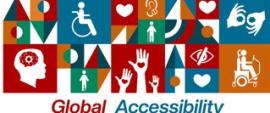
South Africa has reiterated its commitment to building an inclusive society, where everyone can participate and contribute through the National Strategic Framework on Universal Design and Access, a guiding tool aimed at ensuring accessibility for all.
Minister in the Presidency responsible for Women, Youth and Persons with disabilities, Sindisiwe Chikunga, made the commitment as the country joined the global community in observing Global Accessibility Awareness (GAAD) Day, on Thursday.
GAAD is an annual global observance held on the third Thursday of May, to raise awareness and promote the significance of digital accessibility and inclusion for people with disabilities.
Chikunga highlighted that, as digital transformation increases, particularly with the advancement of systems, like artificial intelligence (AI), it is becoming increasingly urgent to advocate for accessible web development, software design, policy-making, and everyday digital communication.
“This day will be used to emphasise and encourage everyone to engage with, think about, and learn about digital accessibility and inclusion for the 1 billion global community with disabilities and the 3.3 million persons with disabilities in South Africa,” Chikunga said.
While acknowledging AI technologies’ significant contribution to accessibility by providing features, including automatic captions, alternative text generation, and voice assistants, the Minister stressed the need for human oversight.
“These tools must be reviewed and validated by humans to prevent errors and ensure their relevance. Accessibility is a fundamental to Human Rights, promoting equal opportunities for persons with disabilities,” the Minister said.
She said the National Strategic Framework on Universal Design and Access is premised on the principle that universal design is not a compromise but a necessity.
The framework serves as a prescriptive guide for the promotion and eventual enforcement of universal design and access standards, using a disability inclusion perspective as its motivating force.
As part of its efforts, the department highlighted common digital accessibility barriers that can be addressed as quick wins, and these include:
• Poor Colour Contrast: Ensure text stands out against the background.
• Missing Text: All meaningful images and links should include descriptive alt text.
• Keyboard Navigation Gaps: All functionalities should be accessible via keyboard.
• Lack of Focus Indicators: Let users know where they are on the page. – SAnews.gov.za


